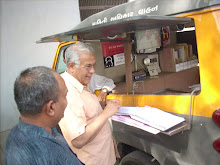Media Nama: New Delhi: Wednesday, 23 September 2020.
PTI correspondent filed a Right To Information (RTI) query with the UIDAI, asking for information on the number of fake and duplicate Aadhaar cards. The UIDAI refused to give any details
As many as 40,955 fraudulent Aadhaar numbers have been discovered and cancelled as of August 31, 2020, the IT ministry told the Rajya Sabha on Tuesday. IT Minister of State Sanjay Dhotre was answering a question submitted by Binoy Viswam of the Communist Party of India (CPI) who wished to know if the ministry had found any fraudulent Aadhaar cards.
The ministry’s admission to having identified more than 40,000 fraudulent numbers raises questions about the security of the Aadhaar ecosystem.
From media reports and published research, the prevalence of fraudulent Aadhaar cards — created either by forgery or through falsification of documents — is much wider. In 2018, independent researchers Anmol Somanchi and Vipul Paikra had compiled a database of over 73 incidents of misuse of Aadhaar cards reported in English media that year. Of these, 52 were cases involved fake or forged Aadhaar numbers. The fraudulent Aadhaars were being used siphon off ration grains, carry out land transfers, procure passports, and get loans, among other things.
Somanchi told IndiaSpend that initially they had included Hindi reports as well, and had found more such incidents. In total, the database consists of 164 incidents reported since 2011, of which 52 involve forgery.
UIDAI had refused to give these details in 2017: The government’s latest submission in the Parliament is a departure from its earlier stance on the matter. In 2017, a PTI correspondent filed a Right To Information (RTI) query with the UIDAI, asking for information on the number of fake and duplicate Aadhaar cards. The UIDAI refused to give any details, saying that the disclosure might affect “national security” or even led to the incitement of the offence itself.
The UIDAI also claimed that its data repository facilities, information assets and infrastructure were “protected system[s]” under Section 70(1) of the Information Technology Act, 2000. “Any disclosure of the UIDAI grievance database, which essentially forms a part of the UIDAI CIDR operations, therefore, would have an impact on national security, strategic, scientific and economic interest of the state etc.” it said.
38 lakh Aadhaar numbers deactivated; ‘live’ coverage of country 88.92%
Meanwhile, the ministry also disclosed that the Unique Identification Authority of India (UIDAI) has deactivated 38.16 lakh Aadhaar numbers as of August 31, 2020, on account of bad or incomplete data under the 2016 regulations for Aadhaar enrolment. Under Rule 28, Aadhaar can be deactivated if an existing photograph is used instead of capturing an image during enrolment, if Aadhaar has been created without valid documents, and so on.
Viswam also wanted to know the coverage of Aadhaar in the country. The ministry submitted that there were 126.17 crore numbers in the country, against a projected population of 137.05 crore. “However, the actual number of Aadhaar holders is lesser due to deaths,” it said.
It referred to the “Live Aadhaar” concept to estimate the number of persons currently alive who held Aadhaar. It said the country’s Aadhaar (live) saturation is 121.86 crore 88.92%.
PTI correspondent filed a Right To Information (RTI) query with the UIDAI, asking for information on the number of fake and duplicate Aadhaar cards. The UIDAI refused to give any details
As many as 40,955 fraudulent Aadhaar numbers have been discovered and cancelled as of August 31, 2020, the IT ministry told the Rajya Sabha on Tuesday. IT Minister of State Sanjay Dhotre was answering a question submitted by Binoy Viswam of the Communist Party of India (CPI) who wished to know if the ministry had found any fraudulent Aadhaar cards.
The ministry’s admission to having identified more than 40,000 fraudulent numbers raises questions about the security of the Aadhaar ecosystem.
From media reports and published research, the prevalence of fraudulent Aadhaar cards — created either by forgery or through falsification of documents — is much wider. In 2018, independent researchers Anmol Somanchi and Vipul Paikra had compiled a database of over 73 incidents of misuse of Aadhaar cards reported in English media that year. Of these, 52 were cases involved fake or forged Aadhaar numbers. The fraudulent Aadhaars were being used siphon off ration grains, carry out land transfers, procure passports, and get loans, among other things.
Somanchi told IndiaSpend that initially they had included Hindi reports as well, and had found more such incidents. In total, the database consists of 164 incidents reported since 2011, of which 52 involve forgery.
UIDAI had refused to give these details in 2017: The government’s latest submission in the Parliament is a departure from its earlier stance on the matter. In 2017, a PTI correspondent filed a Right To Information (RTI) query with the UIDAI, asking for information on the number of fake and duplicate Aadhaar cards. The UIDAI refused to give any details, saying that the disclosure might affect “national security” or even led to the incitement of the offence itself.
The UIDAI also claimed that its data repository facilities, information assets and infrastructure were “protected system[s]” under Section 70(1) of the Information Technology Act, 2000. “Any disclosure of the UIDAI grievance database, which essentially forms a part of the UIDAI CIDR operations, therefore, would have an impact on national security, strategic, scientific and economic interest of the state etc.” it said.
38 lakh Aadhaar numbers deactivated; ‘live’ coverage of country 88.92%
Meanwhile, the ministry also disclosed that the Unique Identification Authority of India (UIDAI) has deactivated 38.16 lakh Aadhaar numbers as of August 31, 2020, on account of bad or incomplete data under the 2016 regulations for Aadhaar enrolment. Under Rule 28, Aadhaar can be deactivated if an existing photograph is used instead of capturing an image during enrolment, if Aadhaar has been created without valid documents, and so on.
Viswam also wanted to know the coverage of Aadhaar in the country. The ministry submitted that there were 126.17 crore numbers in the country, against a projected population of 137.05 crore. “However, the actual number of Aadhaar holders is lesser due to deaths,” it said.
It referred to the “Live Aadhaar” concept to estimate the number of persons currently alive who held Aadhaar. It said the country’s Aadhaar (live) saturation is 121.86 crore 88.92%.














































































